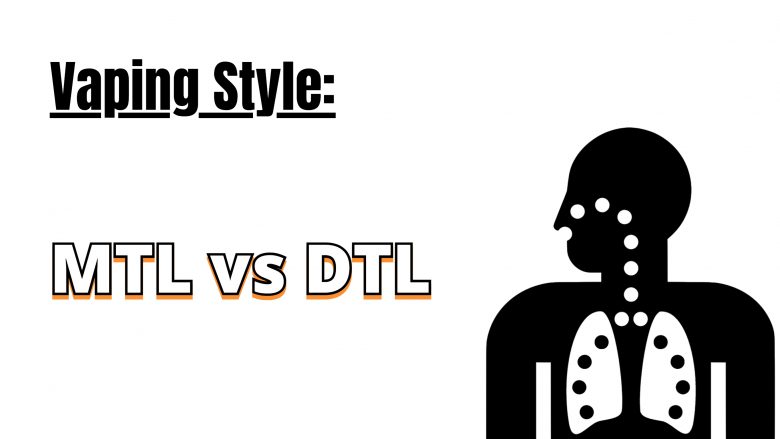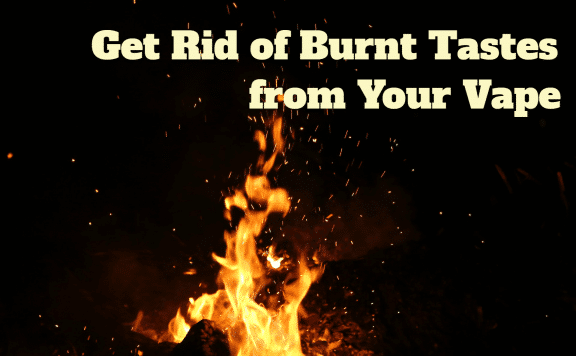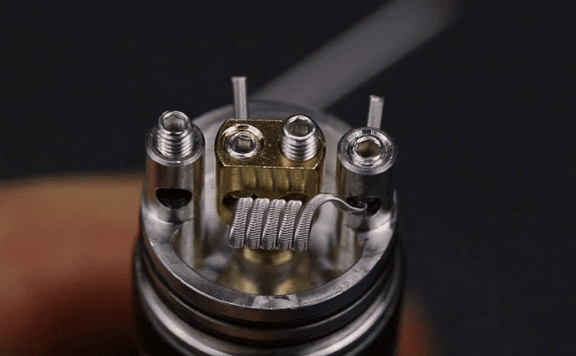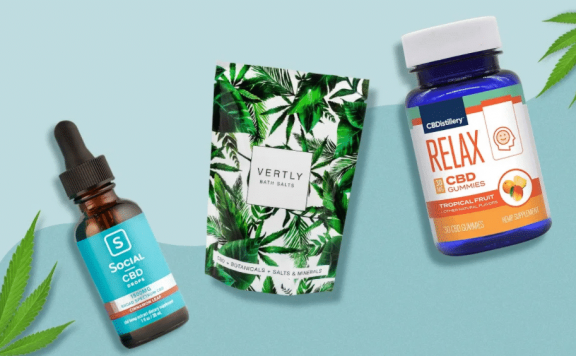In case you’re among the millions of smokers attempting to stop, you’ve certainly considered vaping as a possible solution. Vaping, on the other hand, can appear scary and difficult. Before plunging in as a newbie, it’s critical to master the fundamentals.
It’s easy to see what the marketplace has to offer. When it comes to vaping, learning the “how should I vape?” is just as important as the “which device will work best for me?” In other words, you should understand the two fundamental vaping styles before making that first purchase.
Let’s look at the two most common vaping methods: mouth to lung vs direct to lung, or also MTL vs DTL. These two inhalation modes have unique benefits, but they function best only with specialized vape juice and accessories.
The tool you wind up acquiring is unlikely to be a conscious decision. Many vapers prefer one method over the other. However, if you wish to expand your perspective or don’t seem like you’re having a good time, shifting styles could be the answer.
That being stated, let’s look at these vaping styles and discover which one is ideal for you.
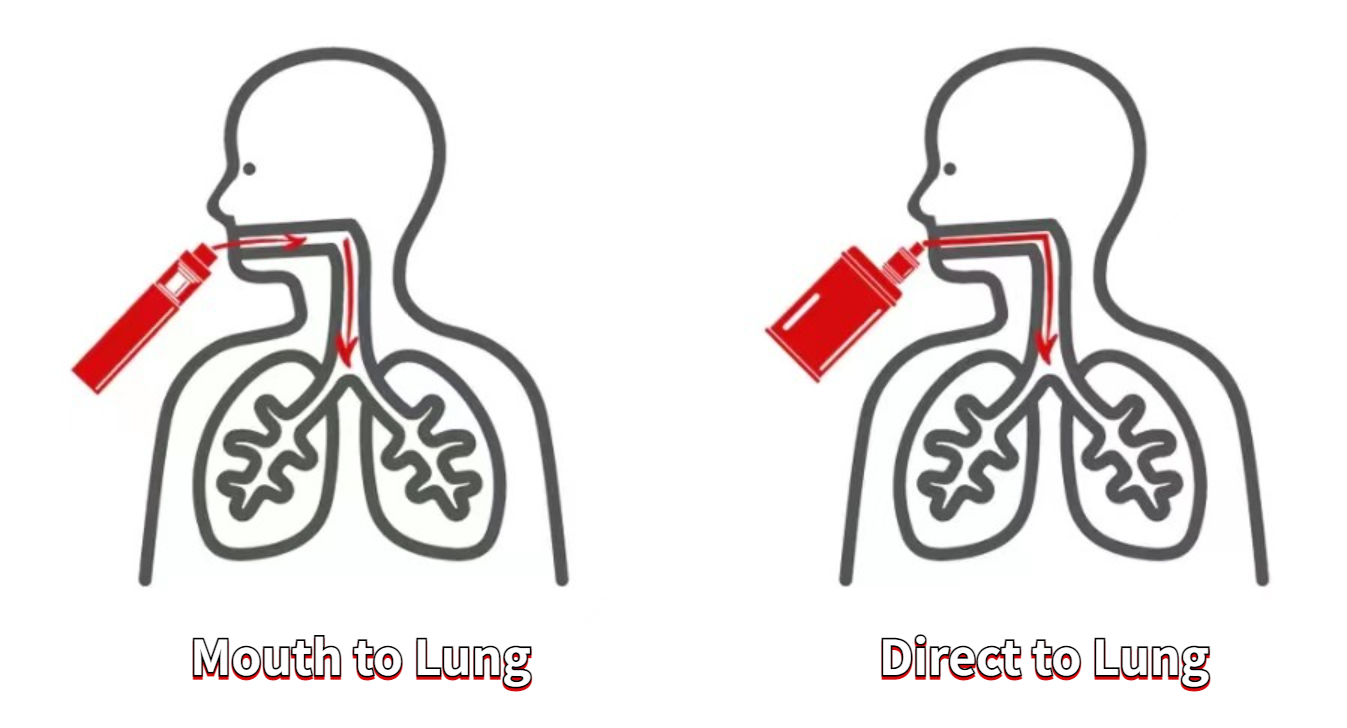
Table of Contents
Mouth-to-Lung Vaping
MTL vaping involves sucking the vapor into your lips and letting it linger for a time before pushing it down into your lungs. Because this is the most commonly employed strategy when smoking cigarettes, it should be simple for any reformed smoker to grasp.
Why MTL Draws?
Newer vapers love this method since it is similar to cigarette smoking. Other than replicating the process of smoking a cigarette, the whole sensation is impressive. When contrasted to the considerably harsher (and less authentic) direct-to-lung approach, the scorching or buzzing in the throat (throat hit) is slight, giving a gentler sensation.
Mouth-to-lung is also the greatest option for folks who want to taste the most flavor with the least amount of cloud production. Because the vapor lingers in the mouth for a little while, it allows the tongue to fully appreciate the delicate nuances of your preferred flavors. MTL vaping’s minimal cloud output is also ideal for vaping in public locations – or anywhere else where you don’t want to disturb others with large vapor clouds.
How to Get Started?
If you find the mouth-to-lung vaping method appealing to you, then you need to think about a few things before beginning.
Hardware: If you’re trying to cut costs (as in the case of many people), mouth-to-lung vaporizers, such as ‘cig-a-likes’ or ‘vape pens’ or ‘packs of smokes,’ are often dirt cheap and overqualified for the task.
In case you make up your mind that you don’t wish to be bothered by a small vape pen and prefer using a piece of more advanced equipment, set the mod to a lower wattage (not exceeding 15-20 watts) and go for a coil with a resistance of 1.2 ohms or more to achieve the greatest possible MTL vaping experience.
E-Juice: When shopping for e-juice, look for a flavor whose PG content is higher than the VG ratio (for instance, 40/60 VG/PG) as MTL work with it better for two reasons. Generally, high PG e-liquid flavors will offer you a punchier throat hit, replicating a harsher throat hit-like cigarette sensation.
Second, PG e-liquids tend to carry taste better than high VG e-liquids. Simply explained, mouth-to-lung vapers will choose e-liquids with a greater PG level due to the flavor-enhancing characteristics and the pleasurable throat punch that accompanies it.
Nicotine Strength: Mouth-to-lung vaping is also the ideal vaping approach for folks who require high levels of nicotine. A mix of low-wattage devices and high-nicotine vape juice provides a super smooth and flavorful vaping experience. Numerous people have discovered that larger quantities of nicotine are no longer required using this vaping technique, and they have effectively reduced their nicotine usage over time.
Direct-to-Lung Vaping
Direct-to-lung inhalation, as the name suggests, involves inhaling the vapor into your lungs directly. It’s basically similar to when you take a typical breath. DTL vaping may seem counter-intuitive to a recent ex-smoker attempting to imitate the feeling of cigarette smoking. If you belong to this group of people, you might prefer to stop direct-to-lung vaping until you’re more comfortable with it.
Why DTL Draws?
Direct-to-lung, as opposed to MTL, can be quite intense. Based on the nicotine concentration of the vape juice, the throat hit could be anything or consider the moment you first smoked a cigarette and choked on it. You got less susceptible to it shortly thereafter and you could comfortably smoke. That is the same story with vaping.
But suppose you’re ready to make a shift. Besides a sharper hit (which will level out over time), don’t anticipate much in terms of flavor. This does not imply that the flavor will be weak or unpleasant, but rather that it will be less intense.
Finally, remember that direct-to-lung vaping will result in greatly greater cloud formation. Admittedly, if you enjoy “cloud chasing” and learning stunts, this may be a lot of fun; nevertheless, it’s not exactly inconspicuous in public, so be kind to the people near you and maintain a safe distance from others.
How to Get started?
The requirements for a meaningful direct-to-lung experience differ as much from MTL as the approach itself. If you wish to enjoy the finest DTL vaping experience, you must have the correct setup.
Hardware: The first thing you’ll need is a sub-ohm tank and a device that can put out some decent wattage. You may have to fork over a pretty penny (upwards of $100 or more) for a solid regulated box mod setup, but there are many unregulated tube-shaped sub-ohm products (tube mods) that’ll run you $50 or less.
Also, there will be a discernible variation in the coils. Whereas MTL coils are often tiny and use synthetic fibers for wicks, sub-ohm tanks use organic cotton and have much bigger wicking ports. That enables the wick to quickly soak with e-juice, resulting in a virtually non-stop flow of e-liquid to the coils and tremendous vapor clouds.
E-Juice: The next step is to purchase some Vegetable Glycerine-rich e-liquid. As previously said, high VG e-liquid is thick as molasses and will be considered suitable for the cloud creation DTL vapers need. You should aim for vape juice with a VG content of 70% or greater.
Nicotine Strength: This is where things get dangerous, and why direct-to-lung vaping isn’t often recommended for newcomers transitioning from nasty sticks. Given the volume of vapor breathed, nicotine doses exceeding 6mg should be avoided when focused on DTL vaping. Something higher than 6mg will almost certainly cause a terrible burning feeling in your lungs and throat because of the substantial quantity of vapor and high nicotine content. When transitioning from an MTL vaporizer to a sub-ohm direct-to-lung setup, a good general guideline is to drop the nicotine level in half—and even half may not be enough. It is preferable to begin small and advance as you progress.
Summary: Mouth to Lung vs Direct to Lung
We’ve addressed a bunch, so let’s immediately go through the distinctions between mouth to lung vs direct to lung vaping.
MTL Vaping
- Suitable for new vapers
- The best way to simulate smoking a cigarette
- A softer throat impact
- Improved taste
- Reduced cloud production
- The high nicotine content is permissible.
- It works best with high-PG drinks.
- Low-power device
DTL Vaping
- Suitable for beginner vapers
- Advanced method
- It doesn’t have the feel of a genuine cigarette.
- Harsher (but becomes smoother with experience)
- Flavor has been diminished.
- Colossal clouds
- Lower nicotine content is advised.
- It performs best with high VG e-liquids.
- It needs to be used with sub-ohm vaping devices.

